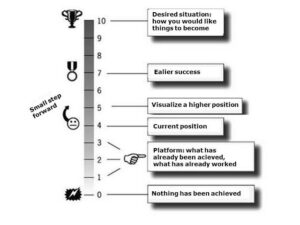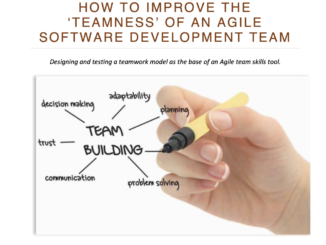OK, “Hello World!” was not my first blog post. I wrote my first blog post a couple of weeks ago and it can be found at SOLWorld. I will re-post it here:
This post could be read as a follow up to last year’s post on by Martin van Gogh ‘R&D goes SF’ . At the end he wrote: ‘Next time: What is our goal and how are we following up?’ In this post I’ll write a bit about the following up.
Almost a year later we see more and more results from using SF in our organization. Not just in a coaching context, but in all aspects of our day to day work.
At the beginning of this year, our software development team decided to start experimenting with working ‘Agile’.
For those new to this terminology my short summary would be :
“Working with a bunch of technical ‘best practices’ combined with more communication, listening, giving and receiving feedback, eagerness to learn together, finding your own solutions, positive goals and small iterative steps in a team”
The last part sounds familiar? That’s what I thought when starting to work in an agile way with my team!
An important part in working as an Agile team is continuous learning. For this we have a retrospective meeting once every two weeks. In this meeting we talk about what we did the last two weeks, what went well and what could be improved. For this I find the SF scaling technique very useful.
I started with a scale from 1 to 10 and asked all team members to write down a number for how well they thought these last couple of weeks went. Everybody wrote down their number and put it on the scale on a white-board. Next I asked them to write down what was already in that number and write it down on a post-it note. After this we also put these notes on the white-board and they explained what they had written. The next step was to ask them to use another post-it to write down what could be done to go one step forward for example from a six to a seven. This all gave us lots of ideas about improving the way we work and gave us individual and team goals to work on!

To me this is just a small example of how well SF can be used in the daily work of a (profit) organizationThe learning continues, for me and my team. SF and Agile, they really work together and I’m looking forward to talking to and learning from other people who have similar experiences!





Be the first to comment